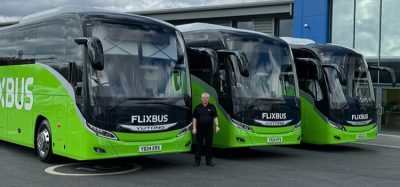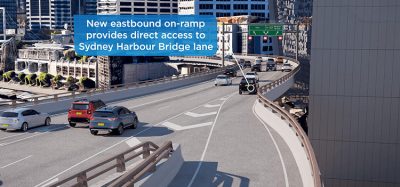IRID technology: the London focus
- Like
- Digg
- Del
- Tumblr
- VKontakte
- Buffer
- Love This
- Odnoklassniki
- Meneame
- Blogger
- Amazon
- Yahoo Mail
- Gmail
- AOL
- Newsvine
- HackerNews
- Evernote
- MySpace
- Mail.ru
- Viadeo
- Line
- Comments
- Yummly
- SMS
- Viber
- Telegram
- Subscribe
- Skype
- Facebook Messenger
- Kakao
- LiveJournal
- Yammer
- Edgar
- Fintel
- Mix
- Instapaper
- Copy Link
Posted: 28 October 2009 | Jeremy Evans, Head of Technology Delivery Group, Directorate of Traffic Operations, Transport for London (TfL) | No comments yet
Transport for London’s Jeremy Evans, Head of Technology Delivery Group in the Directorate of Traffic Operations, reveals the new technology that is helping smooth the flow of traffic in one of Europe’s busiest cities.
As one of a range of measures that are helping to keep traffic flowing in the Capital, Transport for London (TfL) has developed new camera technology that can automatically detect a build-up of vehicles and alert traffic operators to implement congestion-busting solutions. In partnership with Ipsotek Ltd, a London-based developer of video analytics systems, TfL has developed image recognition technology to work alongside traffic monitoring CCTV cameras placed at known traffic hotspots to help keep traffic on London’s roads flowing smoothly.
Transport for London's Jeremy Evans, Head of Technology Delivery Group in the Directorate of Traffic Operations, reveals the new technology that is helping smooth the flow of traffic in one of Europe's busiest cities. As one of a range of measures that are helping to keep traffic flowing in the Capital, Transport for London (TfL) has developed new camera technology that can automatically detect a build-up of vehicles and alert traffic operators to implement congestion-busting solutions. In partnership with Ipsotek Ltd, a London-based developer of video analytics systems, TfL has developed image recognition technology to work alongside traffic monitoring CCTV cameras placed at known traffic hotspots to help keep traffic on London's roads flowing smoothly.
Transport for London’s Jeremy Evans, Head of Technology Delivery Group in the Directorate of Traffic Operations, reveals the new technology that is helping smooth the flow of traffic in one of Europe’s busiest cities.
As one of a range of measures that are helping to keep traffic flowing in the Capital, Transport for London (TfL) has developed new camera technology that can automatically detect a build-up of vehicles and alert traffic operators to implement congestion-busting solutions. In partnership with Ipsotek Ltd, a London-based developer of video analytics systems, TfL has developed image recognition technology to work alongside traffic monitoring CCTV cameras placed at known traffic hotspots to help keep traffic on London’s roads flowing smoothly.
The Image Recognition and Incident Detection (IRID) system makes use of video analytics technology to analyse a video stream taken from TfL’s existing CCTV traffic monitoring cameras and using pre-configured ‘congestion definitions’ it alerts operators at TfL’s London Traffic Control Centre (LTCC) when there is a build up of vehicles. When the traffic operators are automatically alerted to the congestion problem they are able to act faster to alleviate the problem, by coordinating traffic signals, and implementing specific traffic plans to get vehicles moving again.
The LTCC watches over London’s busiest roads to reduce congestion 24 hours a day, 7 days a week. It is unique among the world’s traffic control centres in that it carries out real-time traffic management, while at the same time providing up-to-date traffic information to the media and other interested stakeholders, including other highway authorities in London. The LTCC’s 48-strong team of traffic controllers make use of many different tools to manage London’s traffic, and IRID integrates seamlessly into this umbrella of systems, adding an extra layer of ‘intelligence’.
The IRID technology is currently linked to cameras at 20 known congestion ‘hotspots’ in London, such as Battersea Bridge and Marylebone Road. There are aspirations to increase the number of cameras with IRID technology to 120 within the next year to cover more hotspots and to make road journey times as reliable as possible. The IRID system does not require any additional on-street infrastructure which makes it increasingly easier to expand its use.
The IRID system works by taking feeds from the on-street CCTV traffic monitoring cameras and firstly removes ‘background’ image details, which are of no interest to traffic coordinators, such as trees and lamp columns. Once this has been done the remaining ‘foreground’ objects, namely vehicles, are analysed for behaviour. For the IRID system, stationary vehicles are of greatest interest. Once the system detects a build up of stationary vehicles, it sends a desk top alert to traffic coordinators prompting them to give the problem attention. Before IRID, traffic operators could only trawl through more than 1,200 CCTV cameras looking for congestion issues on the road network.
Once a problem is detected, TfL’s traffic operators are able to implement traffic signal timing plans to clear congestion. In the case of a traffic accident being detected, traffic signals can be coordinated to keep traffic away from the area or help to move the flow of vehicles around an incident safely and quickly.
The IRID system is pre-configured with a ‘definition’ of congestion, which can be variable by location, time of day or day of week, and even season. The alerts are activated when the real-time CCTV traffic images match one of the system definitions of congestion. The preconfigured definition of congestion can also be adjusted to reflect the ever changing nature of London’s busy road network and the different demands that are placed on it, for example when a new shopping centre or housing development results in different levels of traffic for a particular area.
One of the key benefits to using the IRID system at the LTCC is that it works quietly in the background and only requires a response from the user when something of interest occurs. This means that TfL’s operators are able to focus their efforts on dealing with congestion and keeping London moving rather than spending all day looking through hundreds of cameras.
While TfL uses a number of tools to beat congestion, IRID has been a positive addition to help keep traffic moving on London’s busy roads. A good example of how effective it has been occurred recently when a central London road was blocked by a goods vehicle that had careered across the carriageway. IRID identified this incident within 30 seconds and alerted LTCC staff who not only were able to alert the appropriate emergency services immediately, but were then able to put in place remedial action quickly to quell the rapidly developing build-up of traffic around it.
When the IRID system was introduced at LTCC, it really hit the ground running and in one of the first months of using it more than 60 incidents of congestion were picked up via the alerts well before operators, Police or members of the public were able to flag them up. By identifying an incident more quickly, the LTCC operators are able to work faster to reduce the severity of the congestion.
One of the challenges of developing the IRID system has been to ensure it continues to work efficiently in all conditions, particularly adverse weather when there is a greater need to ensure that the roads are clear and traffic is moving safely. IRID has proven to work continuously in all weather conditions, including in bright sunlight (and the sharp shadows this produces), rain and mist and particularly dark and wet days when cameras can be fooled by the many reflections from puddles, walkways and vehicles.
TfL has been researching and working on the development of this technology for more than five years, helping to move it from infancy into a viable, usable tool that may be picked up by other highways authorities across the country. To date, TfL has invested £180,000 in trials, training and deployment of the system to the existing 20 cameras that make up the pilot.
The success of the system underlines TfL’s commitment to improving journey times and reducing motorist frustration. What’s more, this groundbreaking technology will in the long run benefit all of London’s road users, not just motorists. As IRID makes headway solving congestion problems on the Capital’s roads, bus passengers and other public transport users will also appreciate improved journey times.
IRID has proven to be an extremely worthwhile investment and TfL takes pride in how it has already benefited so many Londoners and helped to smooth the flow of traffic in the Capital.
Related topics
Business Models, Fleet Management & Maintenance, Multimodality, Ticketing & Payments, Traffic Management, Transport Governance & Policy
Issue
Issue 5 2009
Related organisations
Transport for London (TfL)








